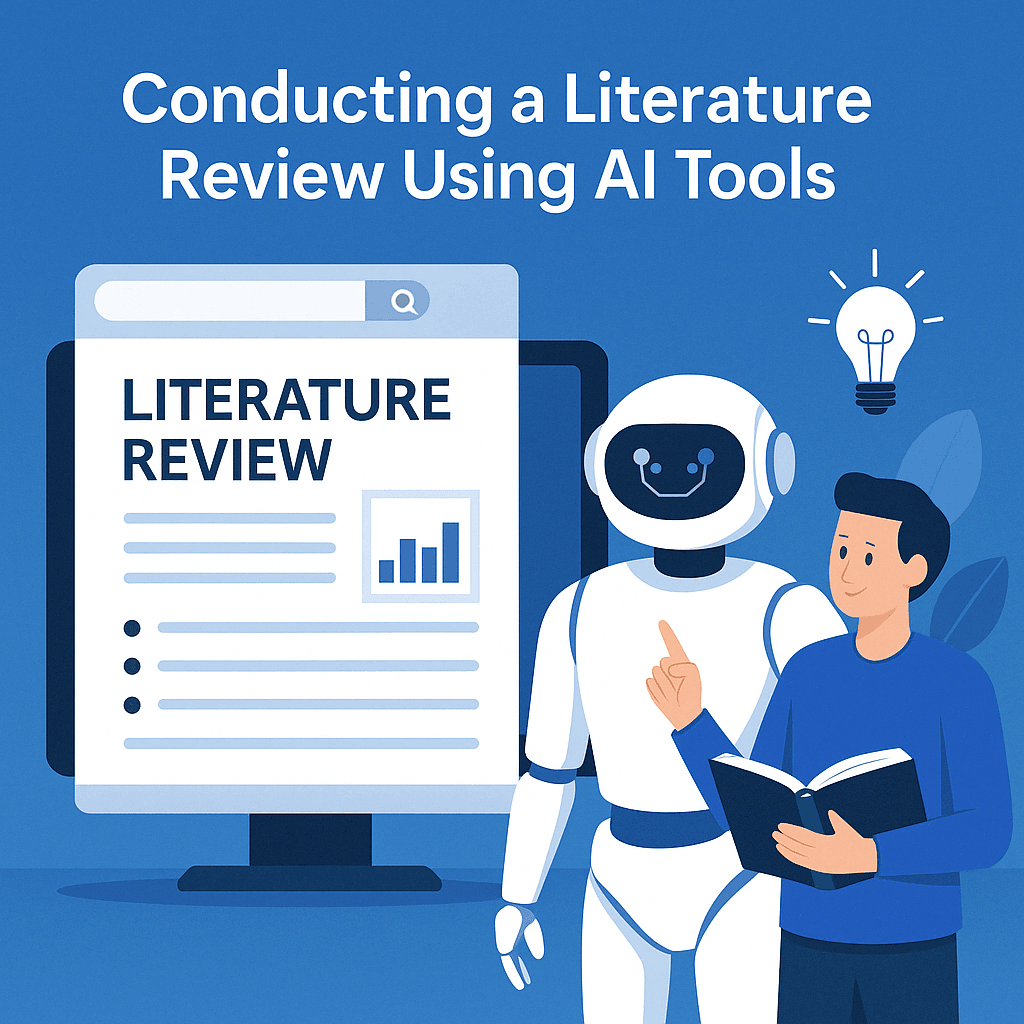
Conducting a literature review is a cornerstone of any academic project, but it can also be one of the most time-consuming and overwhelming phases of research. With the rise of artificial intelligence, however, researchers now have access to a suite of powerful tools that can dramatically improve the efficiency, depth, and quality of this process. This guide explores the smartest strategies for conducting a literature review using AI tools—and why you should embrace them.
Top Picks: Best AI Tools for Academic Researchers in 2025
Why Use AI for Literature Reviews?
AI tools help overcome traditional bottlenecks in the literature review process. They enable you to:
- Rapidly scan large volumes of academic content
- Identify key themes, gaps, and trends
- Extract citations and summarise articles
- Organise sources and generate annotated bibliographies
- Avoid duplication and improve comprehensiveness
By conducting a literature review using AI tools, researchers can reduce manual effort while increasing the precision and scope of their academic inquiry.
Top AI Tools for Literature Reviews
Here are some popular AI-powered platforms transforming how researchers conduct literature reviews:
1. Elicit (by Ought)
Elicit is designed specifically for academic research. You can enter a research question, and the tool returns a list of relevant papers with summarised findings, methodologies, and limitations.
Use Case:
You type: “What are the effects of remote work on employee productivity?”
Elicit returns a list of academic papers with key findings extracted, allowing you to quickly compare methodologies and conclusions.
2. Connected Papers
Connected Papers visualises the relationship between scholarly articles. It’s ideal for identifying related work, foundational studies, or recent breakthroughs.
Use Case:
A PhD candidate in AI ethics uses Connected Papers to map out the key contributions and offshoots of papers by pioneers like Timnit Gebru and Stuart Russell.
3. Research Rabbit
This tool lets you build “collections” of papers, explore citation networks, and track updates on new research. It's like a personalised academic discovery engine.
4. Semantic Scholar
Powered by AI, Semantic Scholar offers enhanced search capabilities, citation analysis, and influence scores to prioritise highly impactful studies.
5. Scite.ai
Scite doesn’t just show how many times an article is cited—it shows how it was cited. Was it used in support, disagreement, or as background? This feature enhances critical evaluation.
Step-by-Step Guide: Conducting a Literature Review Using AI Tools
1. Define Your Research Question Clearly
Start with a focused research question or hypothesis. This will guide your AI query prompts and ensure the relevance of returned results.
Tip: Avoid overly broad queries. Instead of "Education and AI", try "Impact of AI-driven assessment tools on higher education learning outcomes".
2. Start Broad, Then Narrow Down
Use AI search engines like Semantic Scholar or Elicit to collect initial papers. Then, refine your review by exploring citation trails using Research Rabbit or Connected Papers.
Tip: AI can help you discover niche papers that may not appear in traditional keyword-based searches.
3. Extract and Summarise
Once you have your core literature, use AI to summarise complex papers. Tools like Elicit and Scite help distil long articles into digestible insights, including methodology, sample size, and key findings.
Example:
A master's student writing a thesis on burnout in remote workers uses Elicit to summarise 25 papers in one afternoon, saving days of manual reading.
4. Organise and Annotate
Use tools like Zotero (integrated with AI tools like Paperpile) or Mendeley to organise references and notes. AI can even generate citation-ready summaries or integrate directly into your writing environment (e.g. via Google Docs add-ons).
5. Identify Gaps and Trends
AI tools can highlight recurring themes and underexplored areas in your literature pool. Look for:
- Frequently cited theories
- Common limitations
- Emerging methodologies
- Topics with little empirical validation
These insights are crucial for framing your contribution.
6. Stay Updated
Many tools like Research Rabbit allow you to track new publications that cite your core papers. This ensures your review stays current during the research process.
Ethical Considerations
While conducting a literature review using AI tools enhances productivity, always:
- Cross-verify AI-generated summaries
- Read full papers before making claims
- Cite original sources, not AI outputs
- Avoid over-reliance on one platform
AI should assist, not replace, your critical thinking and scholarly rigour.
Conclusion
Conducting a literature review using AI tools is no longer just a convenience—it’s becoming a necessity in modern academic research. These tools can help you synthesise vast bodies of literature faster, more accurately, and more systematically than traditional methods alone.
By combining human judgement with AI efficiency, you can elevate the quality of your review and set a strong foundation for impactful research.
Visit The Case HQ for 95+ courses
Read More:
What Is CAIBS? Discover the Certified AI Business Strategist Program Driving the Future of Work
Certified AI Business Strategist (CAIBS): A Complete Guide to AI Strategy Certification
Inside the CAIBS Course: What You’ll Learn in the Certified AI Business Strategist Program
Why CAIBS Is the #1 Choice for AI Business Professionals in 2025
Certified AI Business Strategist (CAIBS): Career ROI That Pays Off Fast
Is CAIBS Right for You? Eligibility & Readiness for the Certified AI Business Strategist Program
Curriculum Deep Dive: Every Module in the CAIBS Program Explained
Learning Outcomes from CAIBS: Real Strategic Impact for AI Business Leaders
Careers After CAIBS: Top 10 Job Roles for Certified AI Business Strategists
https://thecasehq.com/smart-strategies-for-conducting-a-literature-review-using-ai-tools/?fsp_sid=1139
Comments
Post a Comment